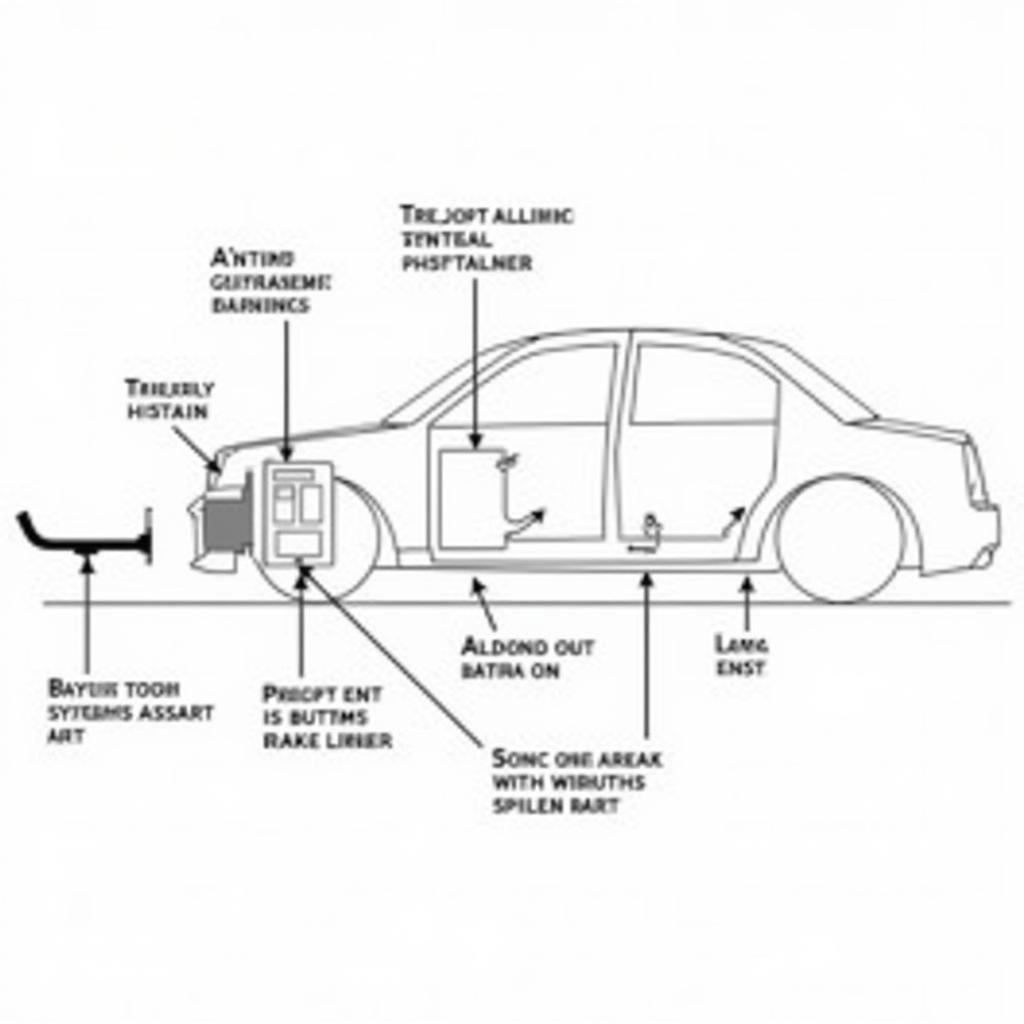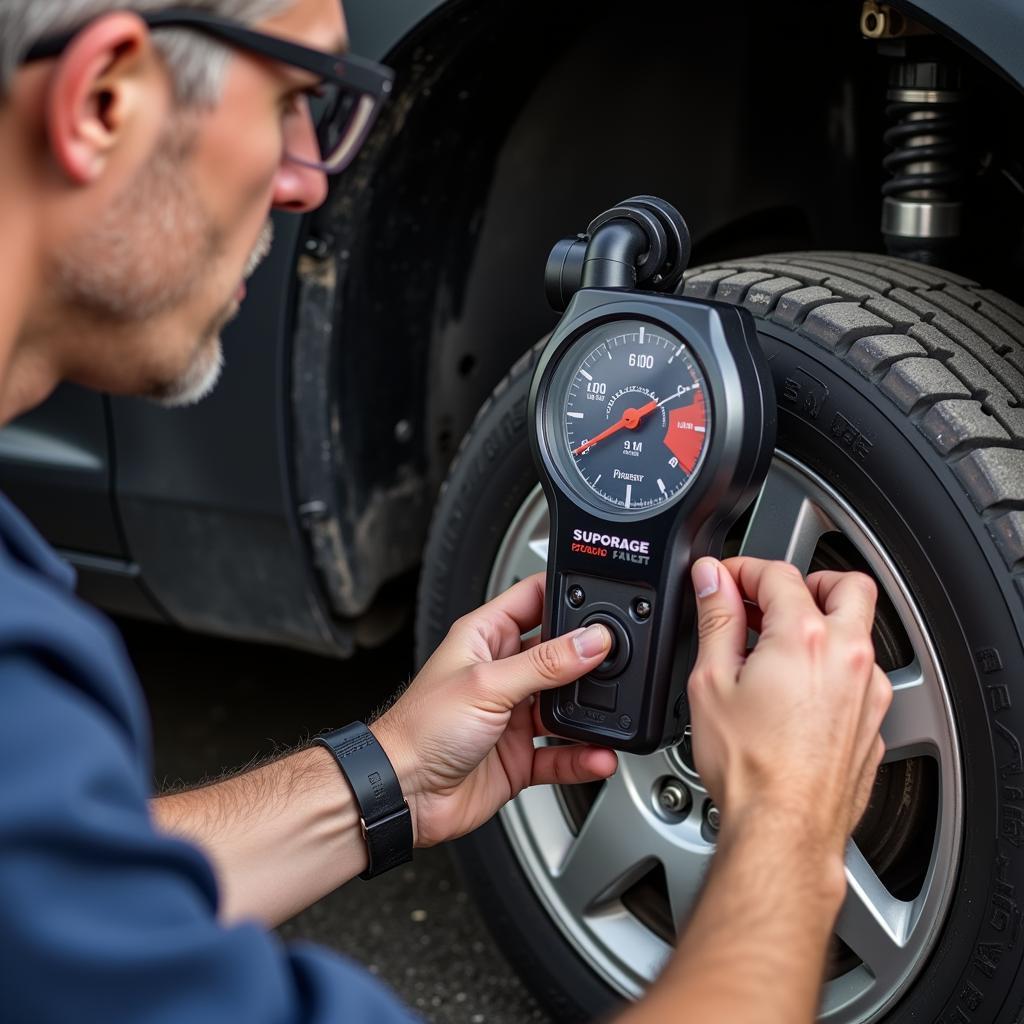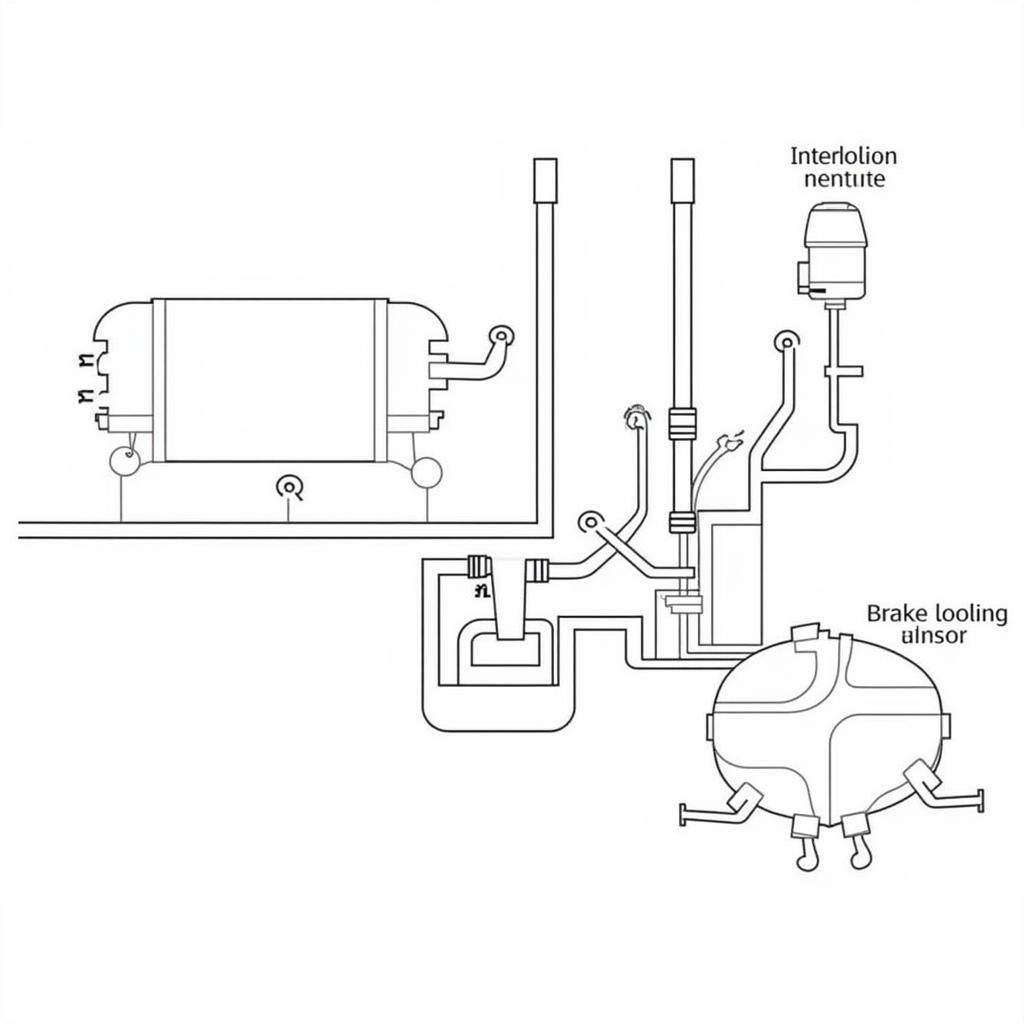The brake assist warning light, often appearing as a yellow or orange circle with the letters “BRAKE” or a similar symbol, indicates a potential issue with your vehicle’s brake assist system. This system is crucial for emergency braking situations, providing additional force to help you stop faster and potentially avoid an accident.
Understanding Brake Assist Systems
Before diving into troubleshooting, it’s helpful to understand how brake assist systems work. These systems use sensors to detect sudden or “panic” braking situations. When activated, the system automatically applies maximum braking force, even if the driver hasn’t fully depressed the brake pedal. This can significantly shorten stopping distances, particularly in emergencies.
 Brake Assist System Diagram
Brake Assist System Diagram
Common Causes of a Brake Assist Warning Light
A brake assist warning light can illuminate for various reasons, ranging from minor issues to more serious problems. Here are some common culprits:
- Faulty Brake Light Switch: Your brake light switch signals to the brake assist system when the brakes are being applied. A malfunctioning switch can disrupt this signal, triggering the warning light.
- Low Brake Fluid Level: Brake fluid is essential for transmitting hydraulic pressure throughout the brake system, including the brake assist system. Low fluid levels can hinder the system’s effectiveness and trigger the warning light.
- Problem with the Brake Assist Sensor: The brake assist system relies on sensors to detect rapid brake pedal application. A faulty sensor might not accurately detect these situations, leading to a warning light.
- Issue with the ABS System: In many vehicles, the brake assist system is integrated with the Anti-lock Braking System (ABS). Problems with the ABS, such as faulty wheel speed sensors, can also affect the brake assist system.
- Electrical Malfunction: Like any electronically controlled system in your car, the brake assist system can be affected by electrical problems. A short circuit, blown fuse, or wiring issue can disrupt its operation.
Troubleshooting the Brake Assist Warning Light
1. Check Your Brake Fluid: Begin with a visual inspection of your brake fluid reservoir. Ensure the fluid level is within the recommended range marked on the reservoir. If the fluid is low, add the appropriate brake fluid type specified in your owner’s manual.
 Checking Brake Fluid Level in a Vehicle
Checking Brake Fluid Level in a Vehicle
2. Inspect Your Brake Lights: Ask someone to watch your brake lights while you press the brake pedal. If the lights don’t illuminate or flicker, the brake light switch is likely the culprit.
3. Scan for Diagnostic Trouble Codes (DTCs): If the brake fluid level is adequate and your brake lights are functioning correctly, it’s time for a more in-depth diagnosis. Using an OBD-II scanner, scan your vehicle’s computer for any stored trouble codes related to the brake assist system. These codes provide valuable clues about the system’s status and can pinpoint specific areas requiring attention.
“Using a diagnostic scanner is like taking an X-ray of your car’s brake assist system,” says automotive engineer Sarah Thompson. “It helps us pinpoint the root cause of the problem quickly and efficiently.”
4. Seek Professional Assistance: If the warning light persists after checking the brake fluid, brake lights, and scanning for codes, it’s best to seek professional help. A qualified mechanic with experience in brake systems and electronic diagnostics can accurately diagnose and repair the issue.
Importance of Addressing the Warning Light
Ignoring a brake assist warning light can have serious consequences. Not only does it increase your risk in emergency braking situations, but it could also be a symptom of a larger issue with your braking system. Addressing the warning promptly ensures your safety and can prevent more costly repairs down the line.
does lexus brake assist 2016 include a warning light
Preventing Future Brake Assist Issues
While some brake assist problems require professional attention, you can take steps to minimize the likelihood of encountering them:
- Regular Brake Fluid Checks: Make it a habit to check your brake fluid level at least once a month.
- Timely Brake Inspections: Adhere to your vehicle manufacturer’s recommended brake inspection schedule.
- Address Warning Lights Promptly: Don’t ignore any warning lights related to your braking system.
Conclusion
A brake assist warning light is your car’s way of telling you something might be wrong with a crucial safety system. By understanding its causes and taking proactive steps, you can help ensure your brakes are always ready to perform when you need them most. Remember, timely maintenance and professional diagnosis are key to safe and reliable driving.

